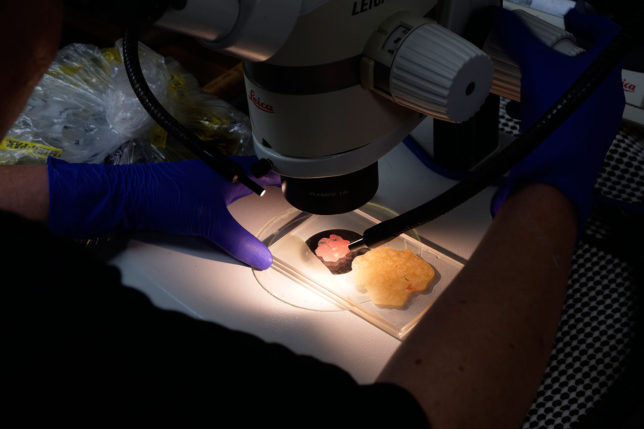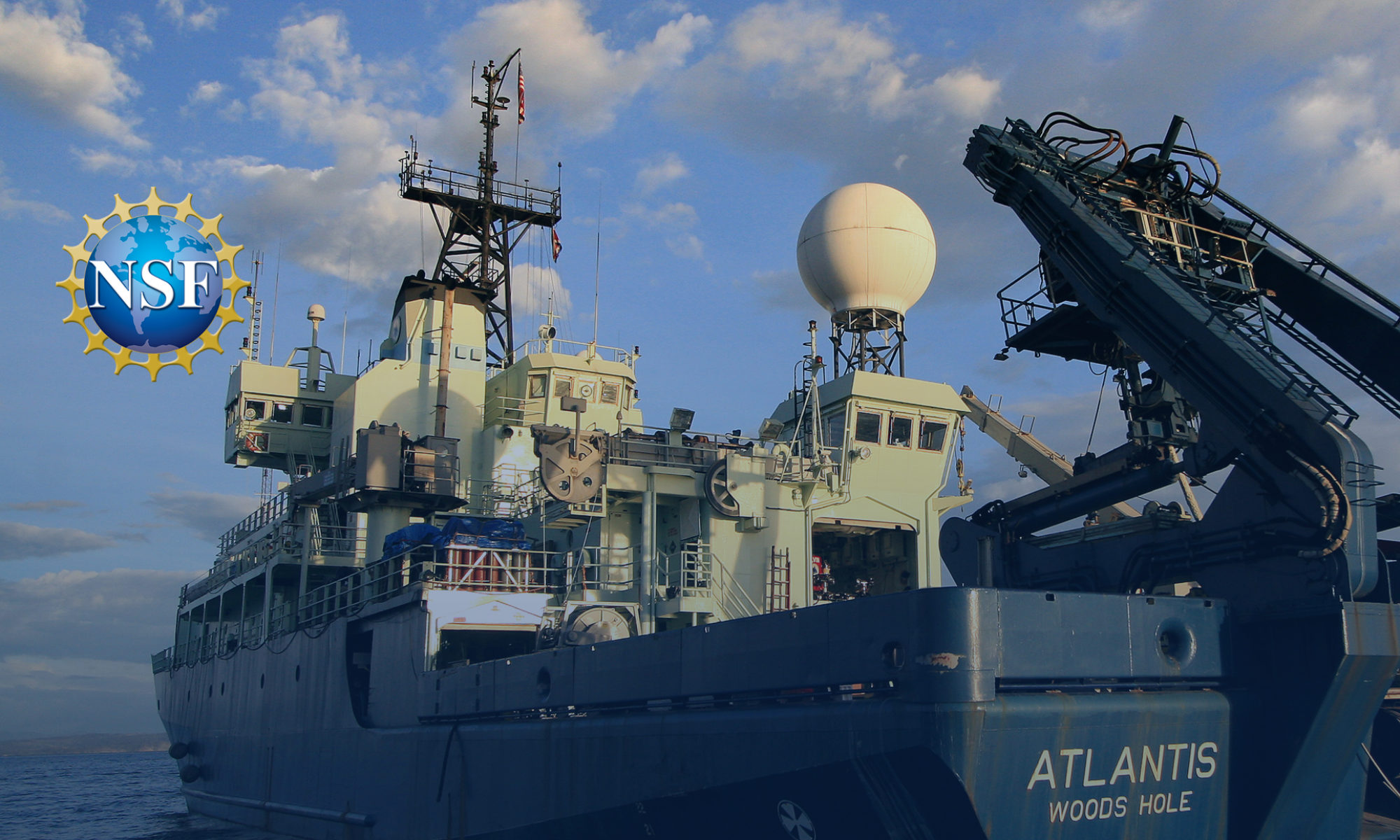
Post By: Carolyn Tepolt, Woods Hole Oceanographic Institution
Alvin weighs about 40,000 pounds and its manipulators can crush rocks. But every so often, when the sub encounters a crab on the seafloor, the crab will raise its claws as if to pick a fight with the great, white beast invading its territory.
I’m here to study these vent crabs. They’re widespread members of hydrothermal communities that patrol tubeworm mounds and mussel beds for food, stark white except for a dapper hint of black on their claws. With so little pigment, these crabs are as translucent as fine bone china. Hold one up to a light, and you’ll see the outline of parallel gills framing the heart, nestled under the digestive organ, a dark, stretched-out M across the back that looks like a child’s cartoon of a seagull in flight. The females can be even more striking, with a princess-pink scrawl of eggs nearly glowing just beneath the shell.

Despite their delicate appearance, they are extremely hardy beasts. They live under enough pressure to crush a car, but can survive on the surface for months or more. They also regularly shuttle between the cold of the seafloor and the heat of the vents, two starkly different environments. The first is full of food and energy, but also hot, toxic and devoid of oxygen. In contrast, the surrounding seafloor, although healthy and oxygen-rich, is cold and largely lifeless. Switching between the two is like walking outside on a beastly hot day from an office where the AC is constantly set too low, but on an even greater scale.
On the ECS leg of the cruise, I’m planning to test this versatility. Once the crabs are on board Atlantis, I’ll connect them to a device that shines infrared light through their carapace to monitor their beating heart. I’ve used this crustacean heart monitor extensively on shore, but this will be my first experience bringing it to sea. There was a certain amount of arts-and-crafts involved in modifying it for shipboard work—as is often the case when building new equipment. In this case, I stocked up on plumber’s gasketing, quick-dry epoxy, and a picnic cooler to house the whole setup. (Plastic coolers are great for science—sturdy and insulated and easy to modify. I prefer the thin, 24-can versions for running cardiac experiments, while your standard beach-going Igloo cooler is ideal for holding dozens of crabs for weeks in a controlled environment.)

While monitoring crab heartbeats, I’ll slowly increase the temperature of the water in their picnic cooler to see how they respond. Periodically, I’ll collect some crabs for future work on their transcriptomes, a type of genomic sequencing lets me see what genes they’re using at a particular time and how these genes change with changes in temperature. Coupled with the heart rate data, this should give me a better understanding of how these animals perform their thermal quick-change at undersea vents.
Vent samples are rare and precious, collected, as they are, by Alvin, so mine will serve double- or triple-duty. I’ll get heart rate data and gene expression in response to heat, my main research goal. But I’ll also carefully dissect these crabs, and any other vent crustaceans I’m able to collect, saving tissue samples for additional and to search for parasites. I’ve seen estimates that more than half the multicellular species on earth are parasitic, but so far only a smattering have been described from vent animals.

As with so many other aspects of vent science, every opportunity to collect more data is useful. I’ll just make sure the Alvin pilots take care around angry crabs.
